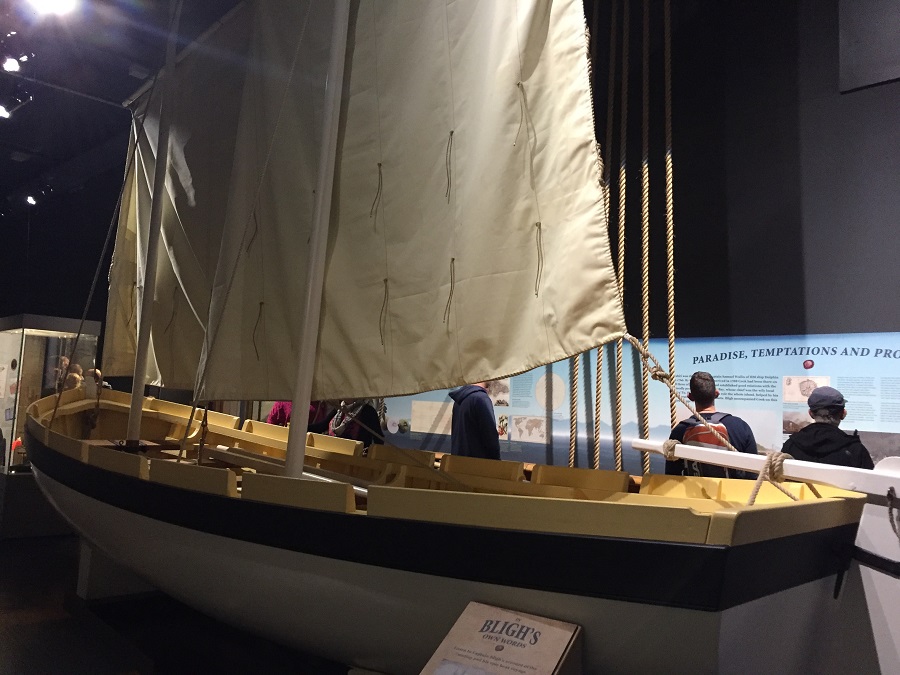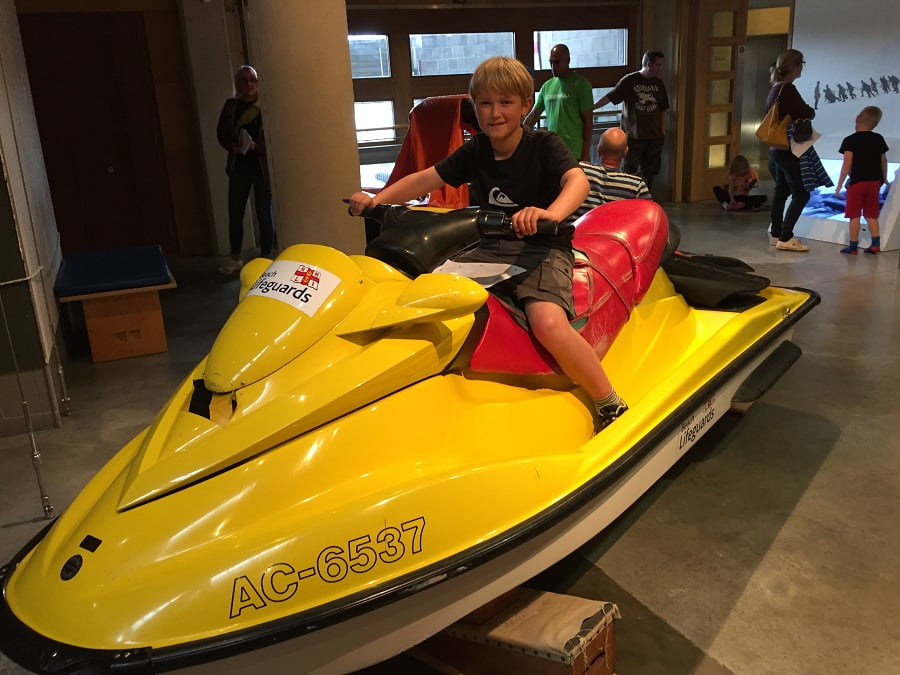Confronted with the prospect of entertaining my two eldest grandchildren for a wet weekend, I decided to pay a visit to the National Maritime Museum in Falmouth. Before leaving, I checked their website for current exhibitions, opening times and any children’s activities on offer that day.
We arrived on a busy summer Saturday but at no time did it feel so crowded that we could not view the many exhibits at our leisure. My two like following trails and grabbed a cetacean hunt which kept them busy in each gallery.
The ground floor was dedicated to British Tattoo Art and I found it quite fascinating. There was a wall of 100 tattooed hands, curated by Alice Snape which illustrates contemporary British tattoo art today and will surely be a historic artefact in years to come. Tattoo history is explored through the ages, from pilgrims, to sailors, convicts, women’s fashion and the present day celebrity tattoo culture. There are models of famous tattoo parlours, tattoo machines, inks and even pieces of human skin complete with tattoos from a collection in the British museum. I admire the museum for pushing the boundaries with this exhibition and for telling the many human stories associated with tattoo culture through the ages – it richly illustrates some social history.

Alongside the tattoo exhibit is an account of the life of Captain Bligh, a Cornishman who was made famous by Hollywood film makers of ‘Mutiny on the Bounty’. A life-size model of the small open boat in which Bligh and fellow supporters were cast adrift by the mutineers led by Fletcher Christian was on exhibit, made by boat builders in the museum workshops. His incredible 4000 mile journey and feat of navigation from Tofua to Timor with the most basic of navigation equipment and food for only a few days was the subject of a Channel 4 documentary earlier this year. It confirmed what a fine seaman Bligh was. The success of the journey was a feat of leadership and a triumph of endurance by him and his men.

We explored all the floors from the lookout tower at the top of the building with its incredible views over Falmouth town and harbour, to the tidal zone below sea level where you can see the huge tidal range, see barnacles clinging to the glass windows and watch fish swimming by. There are interactive navigation and weather exhibits, plus a small pool with wind blowing from each side so you can try to sail small yachts and see the effect of the wind on their sails. It’s nowhere near as easy as it looks!
There are many galleries with static exhibits, charting maritime history in Cornwall, a flotilla of historic small boats hanging from the ceiling and a chance to check out the search and rescue work undertaken by the RNLI.
We joined in the daily craft workshops and managed to make a ship in a bottle and a pirate treasure chest. There are story telling sessions on certain days, a puppet theatre and a soft play for younger children. The cafe has views to die for and the toilets are plentiful and clean. I can honestly say this is a living museum, with something for everyone. I am planning a return solo trip so I can spend time reading the texts without being pulled along by naturally impatient youngsters anxious to move on!
We spent four happy hours wandering around. All of us thoroughly enjoyed ourselves – a credit to the dedicated team who manage and run the museum. Thanks to you all.
Getting there
The National Maritime Museum Cornwall is based at Discovery Quay, Falmouth and easily reached by car or public transport.
Falmouth is approximately 45 minutes’ drive from Bosinver. Postcode for SatNavs: TR11 3QY. There are several public car parks close by. If you prefer to travel by train, there are frequent trains from St Austell (changing in Truro for the branch line to Falmouth). The journey takes about an hour. From the Falmouth Town station, it’s just a short walk to the museum.
Which is your favourite family friendly museum in Cornwall? Leave a message below, post on our Facebook page or tweet @Bosinver – we’d love to hear your suggestions.














